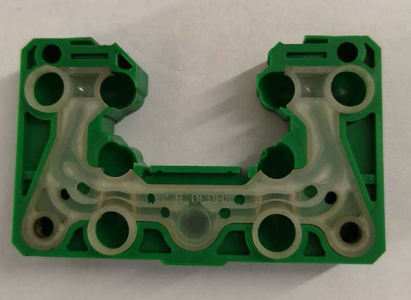Overmolding is a procedure where you making one singular thing by using two or even more matters- in different variants.
Usually, the main matter is used to call as “substrate”, is semi or fully amplified by the overmold material across this process
The list of a substrate could be very long and in some way – you can use almost anything for it. For example, you may use a button or metal part of your machine and many more. The overmold materialsshow up in pellet shape and in most cases, it is by plastic. The shape of overmold materials has to go through a phase of merging with colorants, foam fillings, and others. The next step is to heat them until they reach their point of melting so they become a liquid and injectable to mold tool. All materials are not suitable for overmolding- it depends on the compatibility of the material.
The overmolding as a specific process may be used for many things. It has advantages and disadvantages.
It may help you to improve and remodel your design, in aesthetic and functionality ways. This option is absolutely endless- you can add colors in different ways with overmolding. Overmolding lets you choose between thousands of colors that fit with plastics. Also, the great part of overmolding is you can add a wide specter of details on the product according to your needs. Overmolding is brilliant because it can offer you safety- sharp corners and edges can be very dangerous so we can smooth them by overmolding. It is an amazing way to protect workers and people who live in your house.
In modern ages, overmolding is increasingly represented- there is no person that becomes aware of the need for remodeling.
Besides all the good benefits of overmolding, there are some troubleshooting and limits related to it.
Problems that appear in most of the cases are a bad merger, not enough of filling into substrate and differences between materials even of the same class that are not compatible. For example, if you want to pair up a metal part with the plastic you can do it by picking any plastic but if you want to
connect plastic to plastic you may find the issue of compatibility. A problem that builds on this one is that sometimes we are conditioned to do overmolding with more than two materials and we can only imagine how difficult it could be to combinate them.
In the end, the most common usage of overmolding is improving the performance of the product. It leads us to the best variety (safety, appearance) of a product but at the same time, it may be very difficult to achieve that- depending on class and number of material.
Always weight few factors before the conclusion of overmolding and if it is the best solution. The conclusion is simple- overmolding presents the best way to combine two or more different parts into one, which is improved and presents the best features of both items
